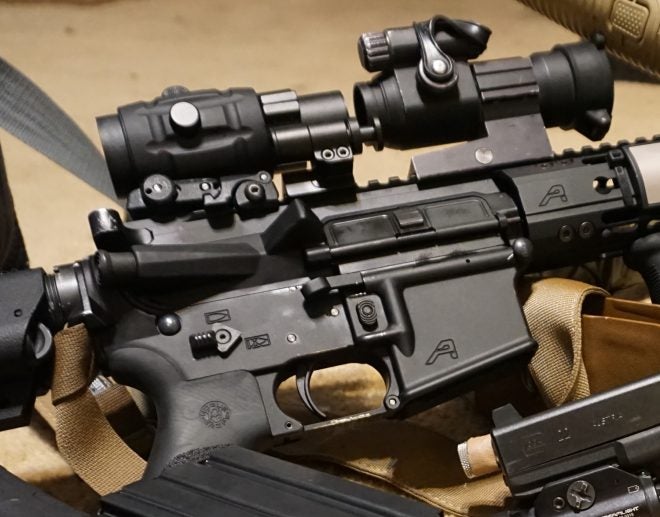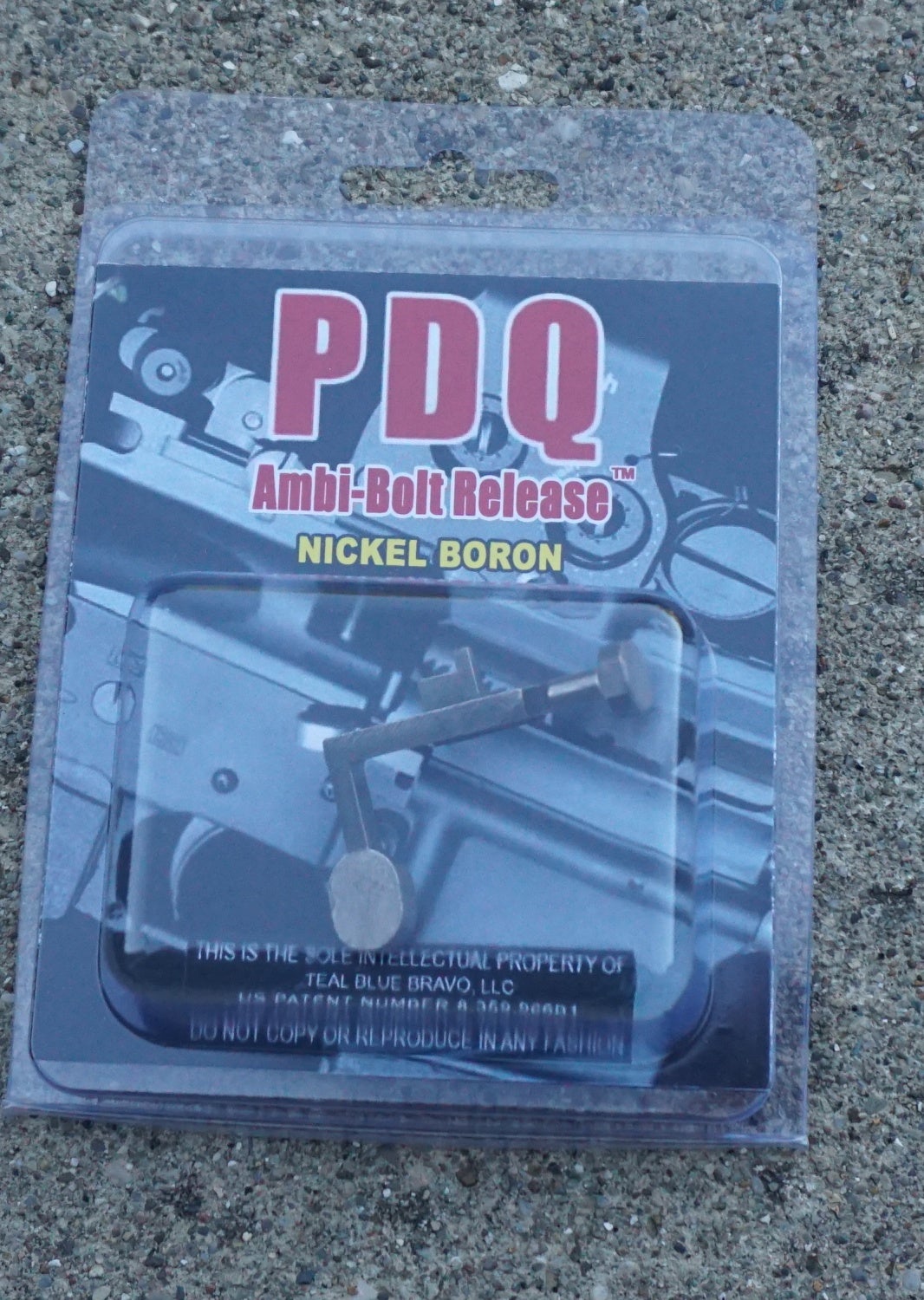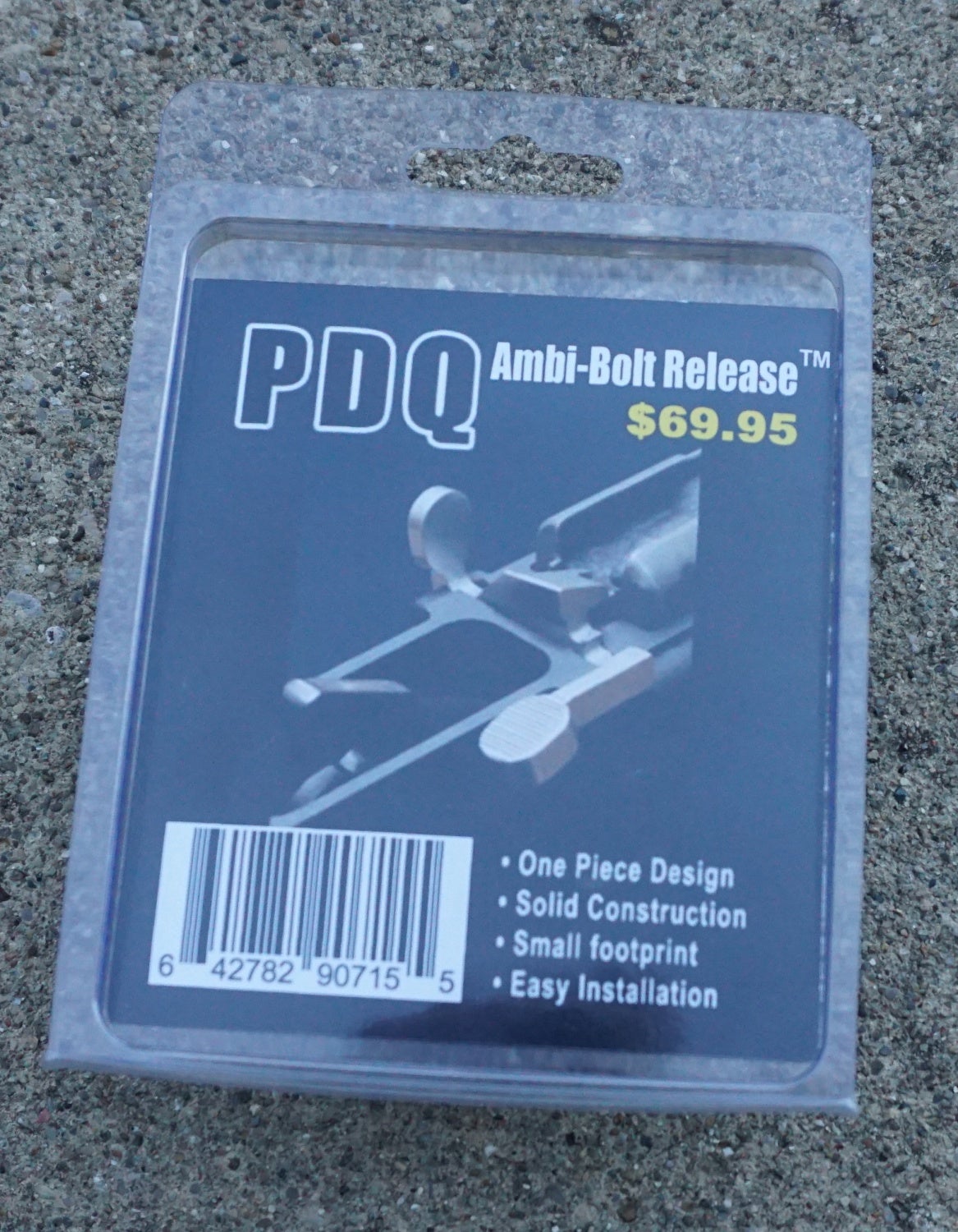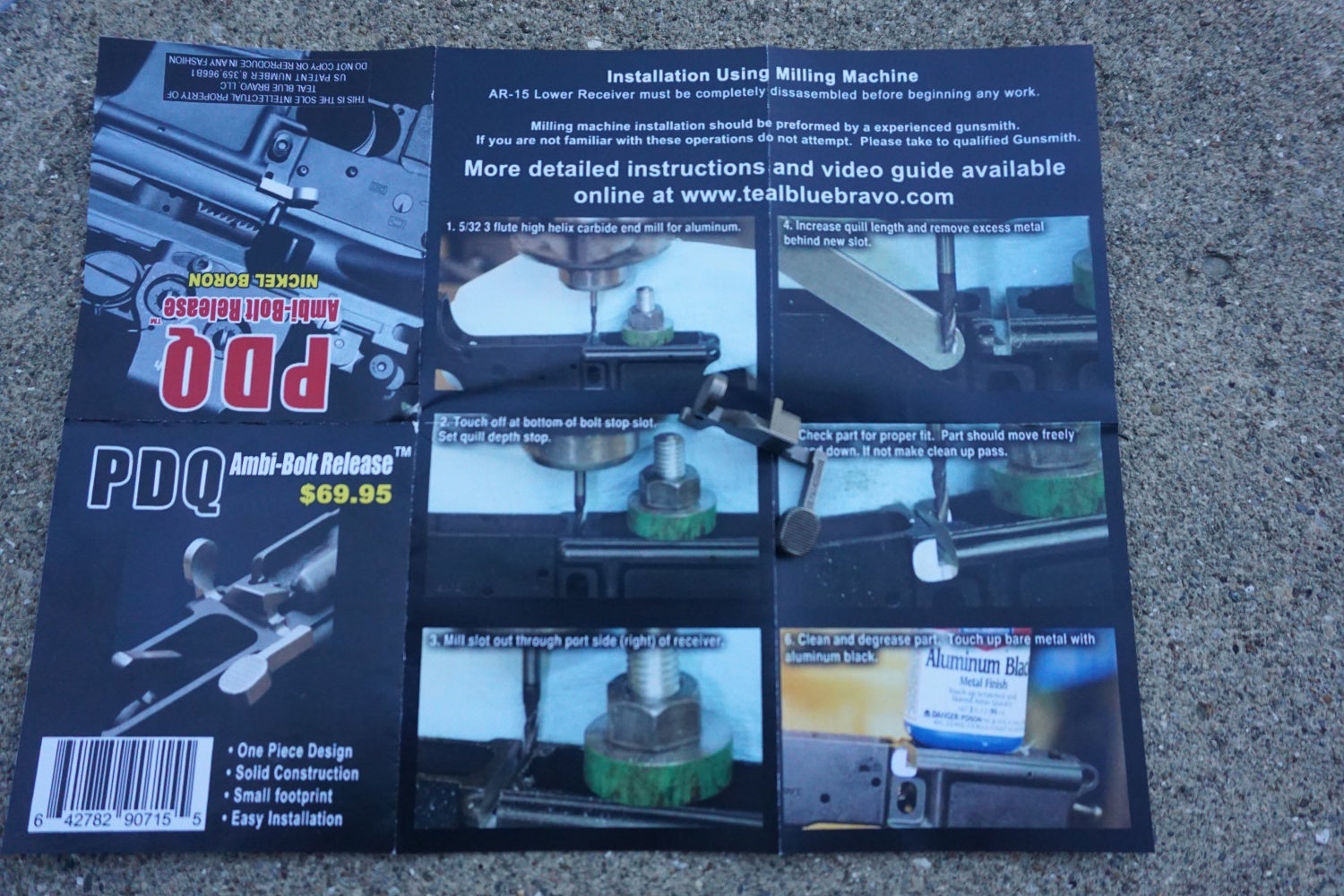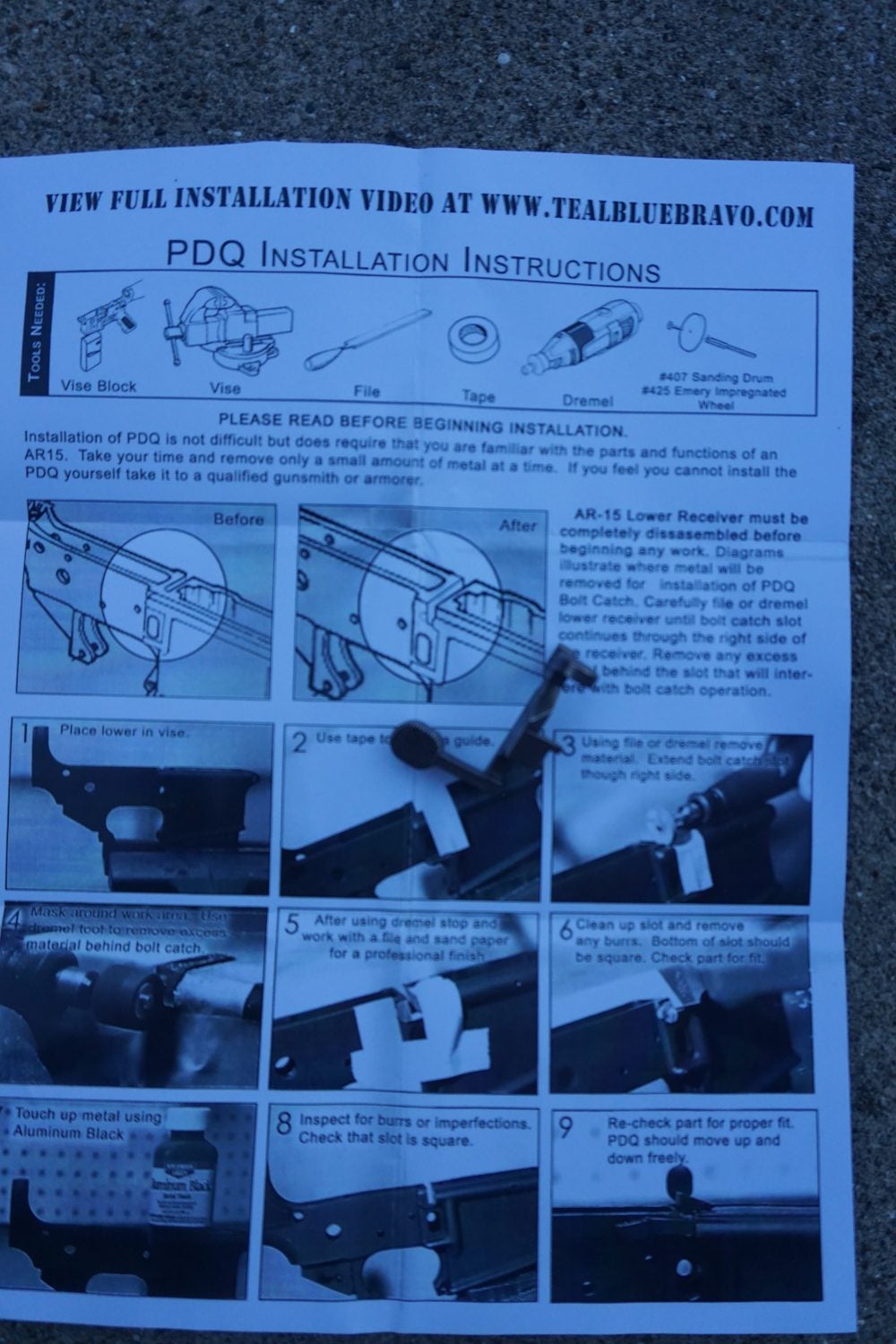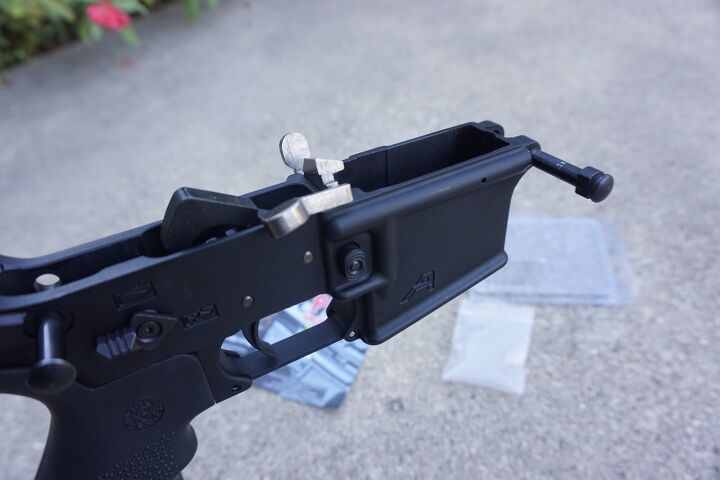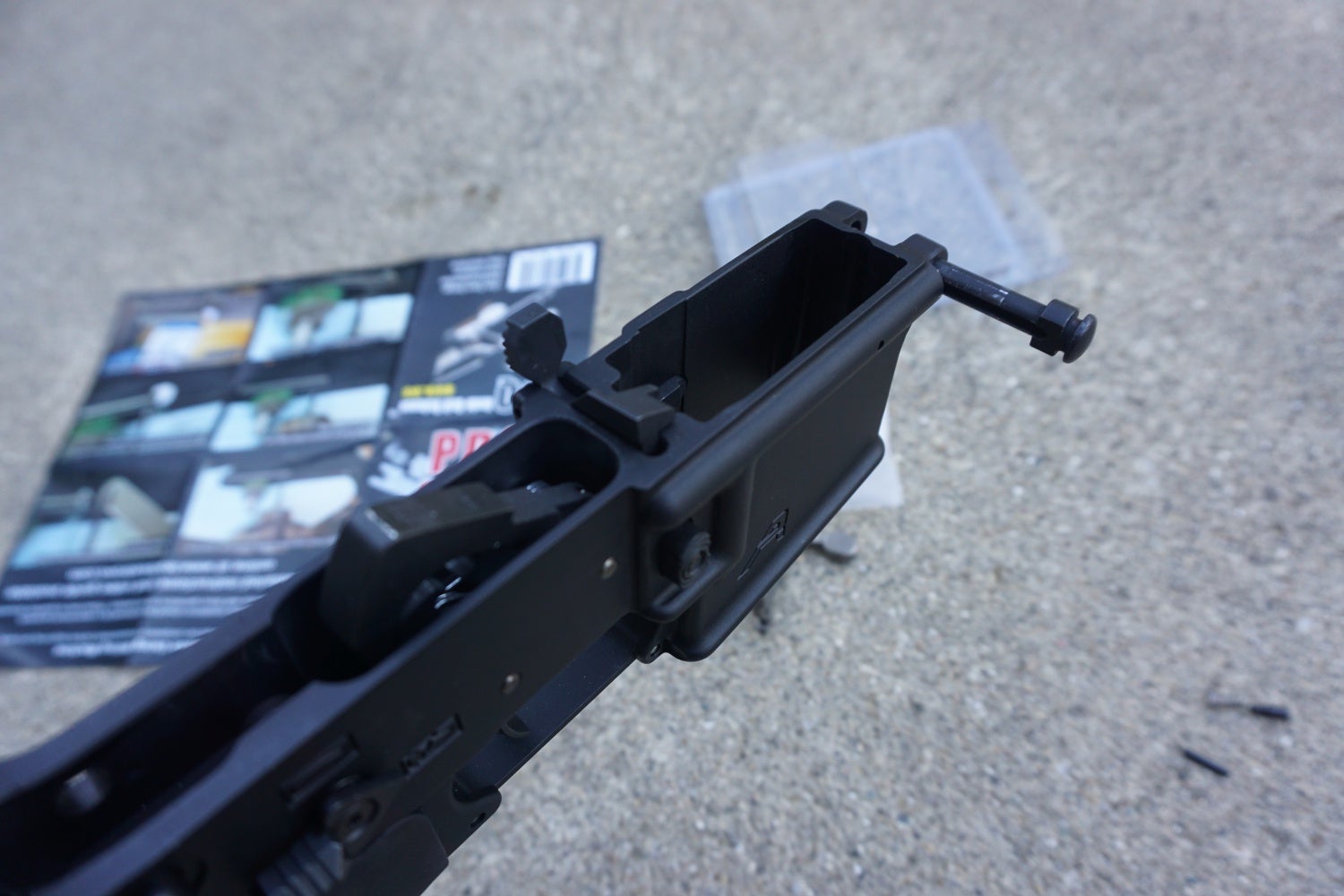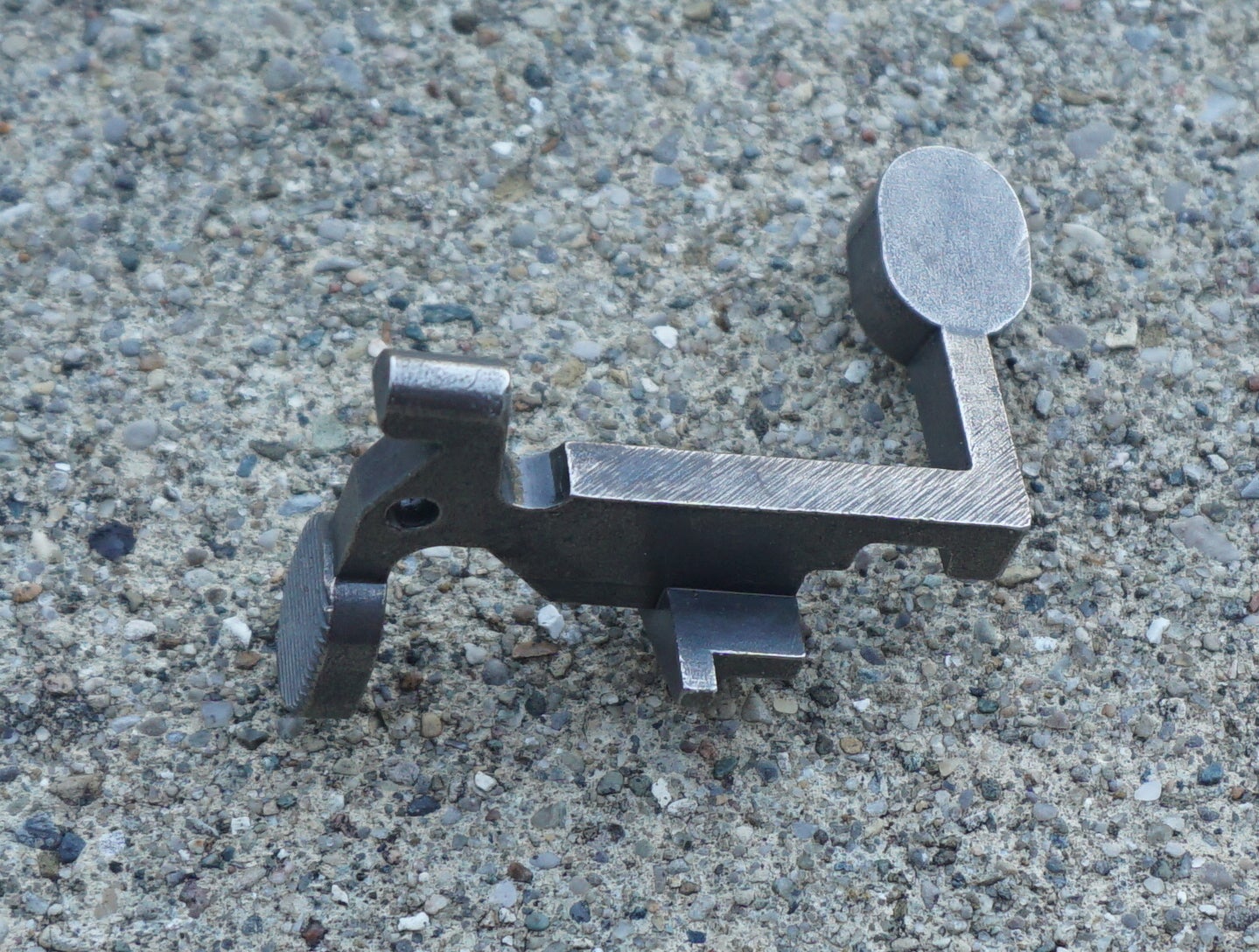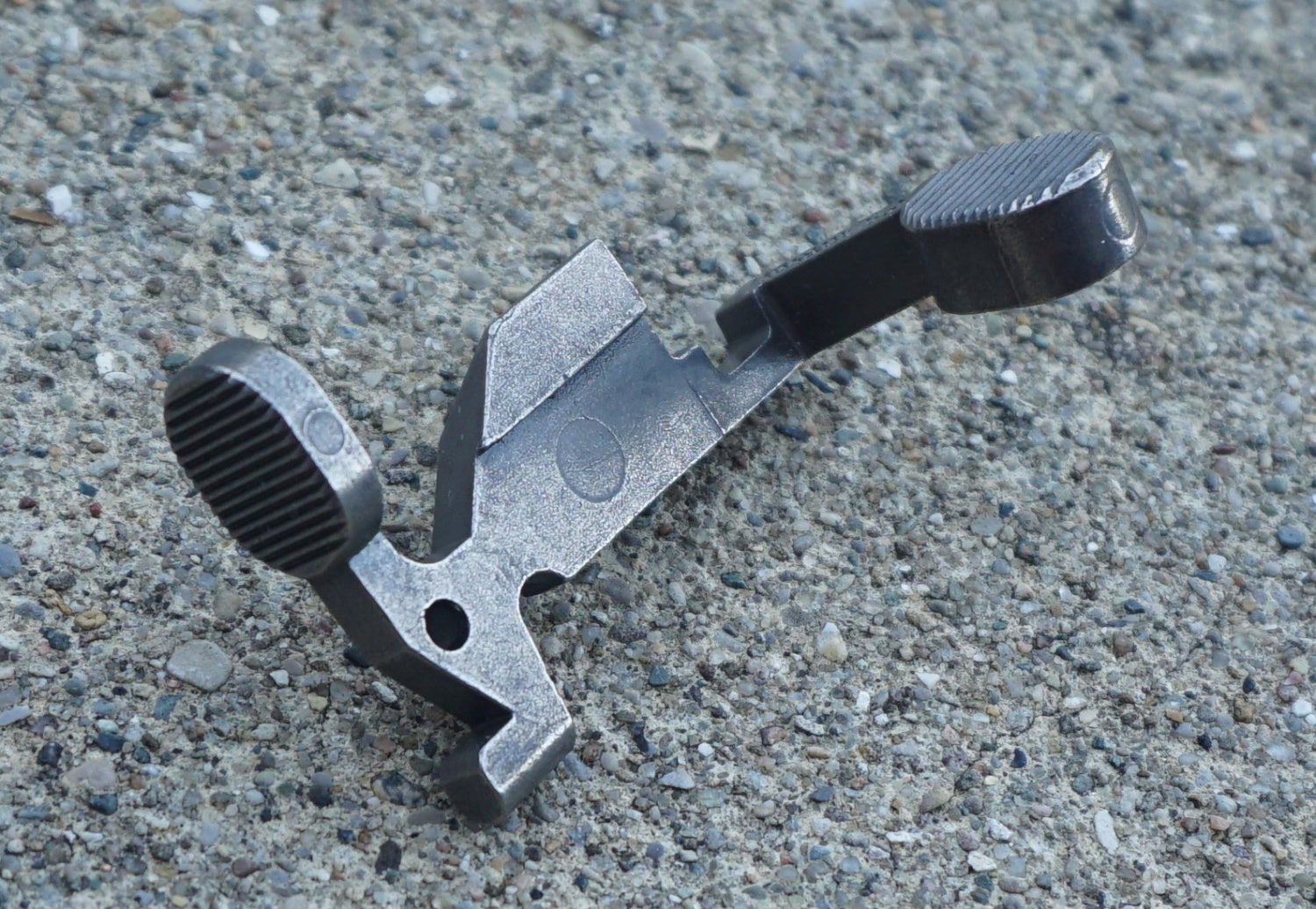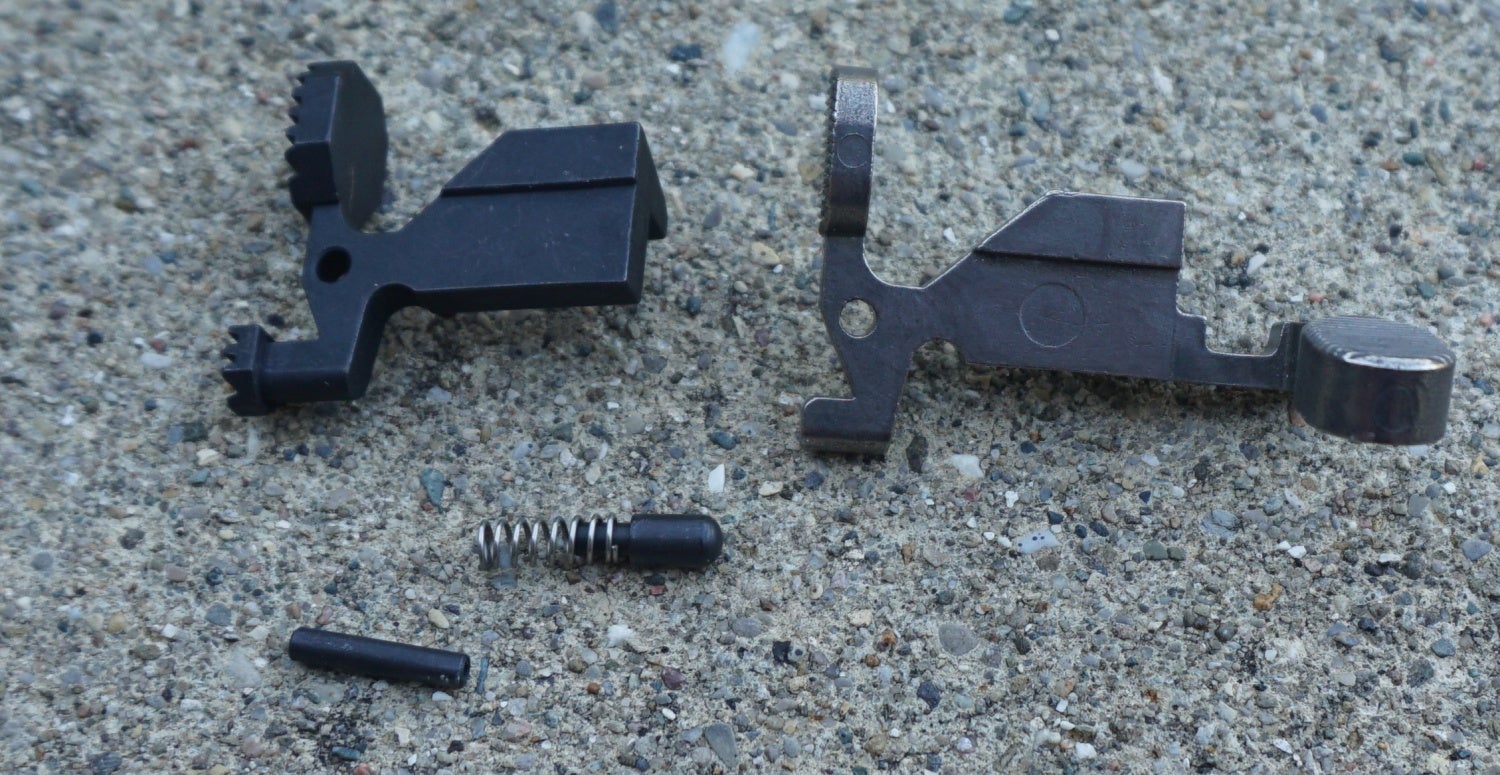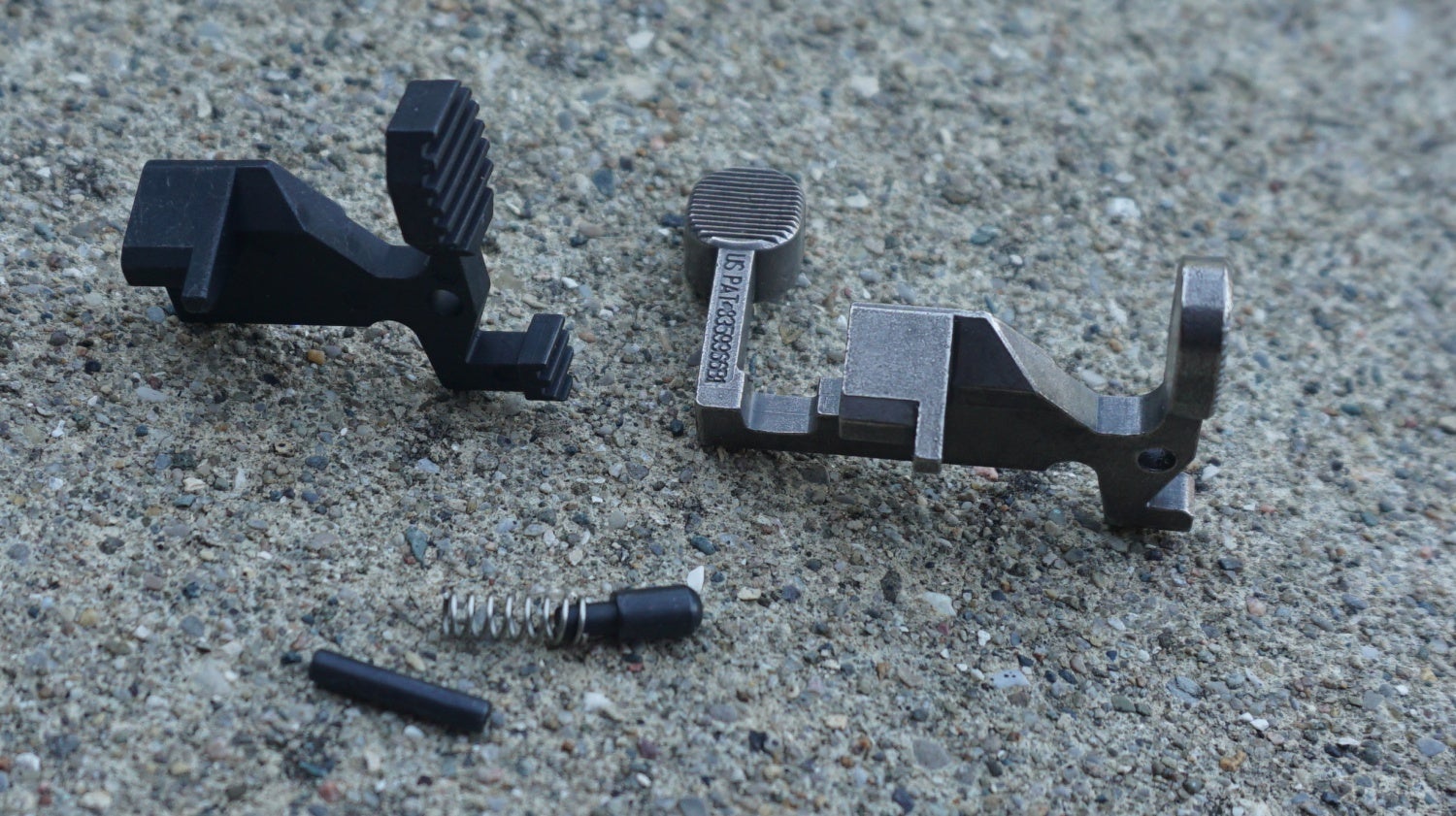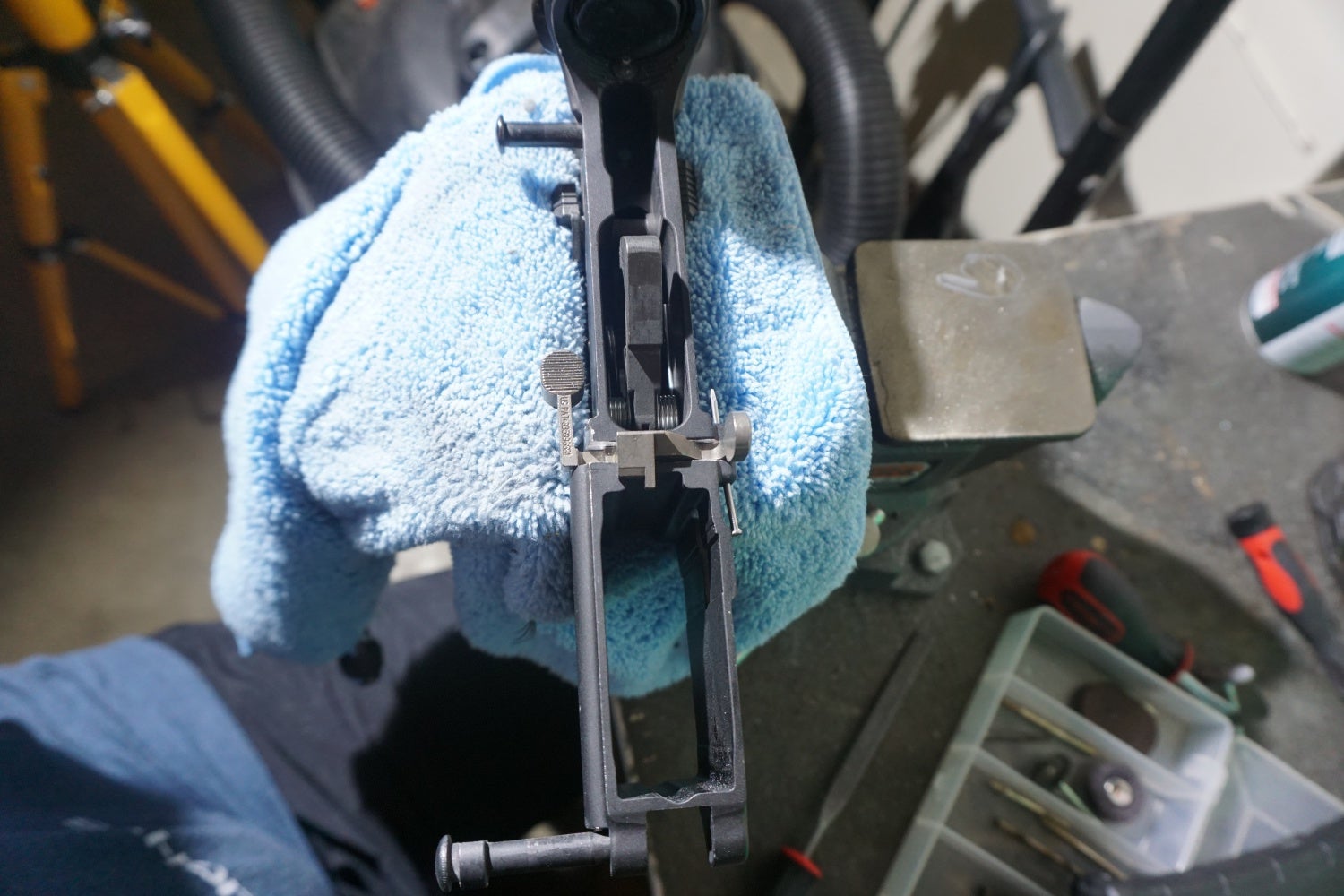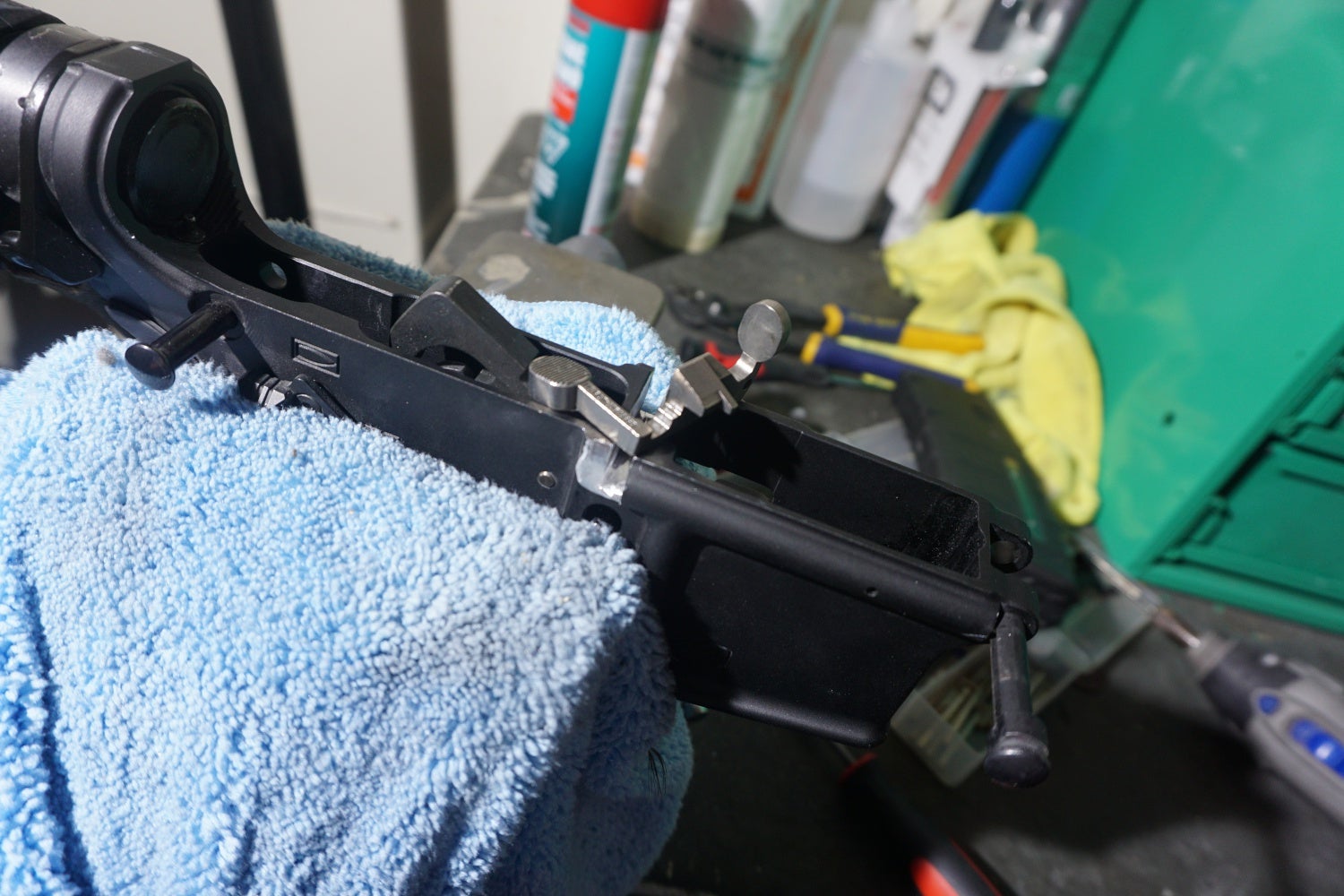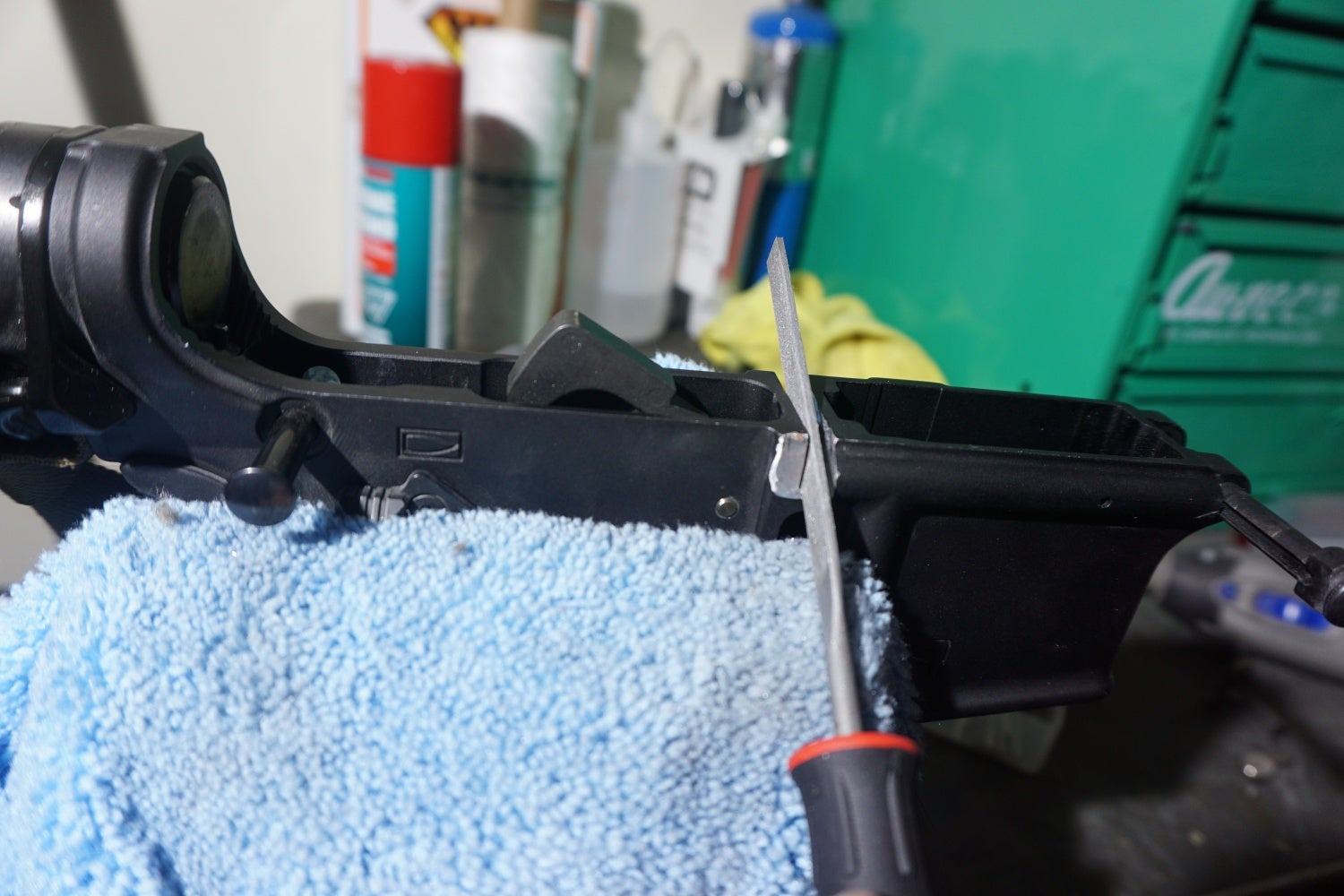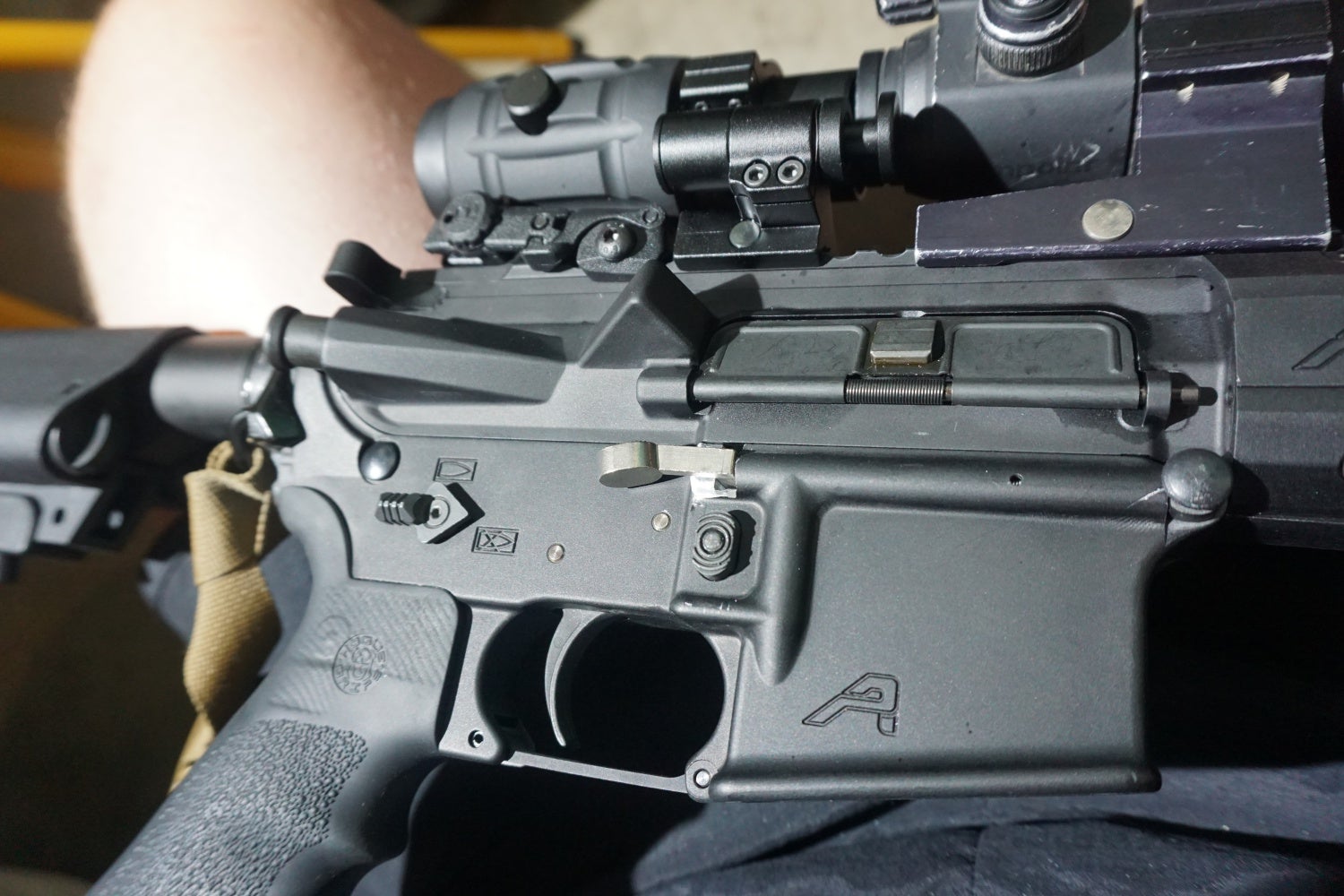I’ve always been an extremely big fan of any AR15 extended right side bolt release, whether it was Magpuls BAD lever, or Knight’s Armament’s integrated design. The sheer simplicity and difference in operation these devices make can cut down reloading time by seconds when used correctly. But not only reloading, but also general weapons manipulation and malfunction clearing makes much more of a difference after an extended bolt release is installed.
However, one of my gripes with the after market extended bolt releases are that they appear to have three weak points. The first one being whatever mounting system to the actual bolt release is, if those screws come loose, the entire mount could be easily lost. Second, the long lever is an issue when wearing a plate carrier and having a number of objects that could snag on it with the left side of the rifle always facing and being up against your chest. This is less of an issue if a shooter is left handed. And third, operating BAD lever style bolt releases puts your trigger finger in an uncomfortably close position to the trigger when manipulating the release. Of course your rifle should always be on safe until ready to fire, but I can easily foresee a situation wherein a shooter could slip on the device, and fire the rifle inadvertently if it was on Fire.
Therefore when I first saw the PDQ (Pretty Damn Quick, Patent No. 8,359,966 B1) lever installed on a friend’s AR15, I knew I had to have one for myself. It allows for a very minimal outside footprint, activating the device has a very small chance of slipping a trigger finger where it shouldn’t be, and there is very little that could malfunction with it unless the right side of the rifle is butting up against an object. Putting together an Areo Precision carbine length AR, I included the PDQ on the build. These are my observations on the device.
First of all, for something that makes such a difference on the weapon system, the PDQ is almost impossible to find these days. Several companies and distributers have stocked it in the past, but nowadays you probably won’t find any of these companies with the device currently in store. Buying a used one doesn’t crop up much either because many owners of it tend to leave it on their lower receivers because you have to mill and file down a section of your lower for it to fit. Thus I had to go directly to the source and purchase one for $59.99 from Team Blue Bravo, the manufacturer in Florida.
Installing the PDQ does involve some minimal gunsmithing. If you can have a machinist or gunsmith do this for you, all the better, but it can be done at home with a file and a drill, provided you are willing to accept the results of your work. Bare in mind that with the PDQ on, you probably won’t be able to use that lower receiver with a standard bolt release again because of the open space that could invite dirt and debris directly into the action. Functionally it should work fine, but opening up more pores into any receiver is really probably not in anyone’s best interests. You will also have to find some Aluminum Black or equivalent finishing agent to cover up the raw aluminum that you had to cut through. Unfortunately the PDQ itself is made of Nickel Boron, so you have to get a separate finishing agent to color the shiny device flat black or any other color you want.
When filing down the slot that it fits into, you’ll need to carefully not file too much, and fit the part into the slot until it functions perfectly. It uses the existing roll pin, spring, and plunger that come with your standard AR15 bolt release. Before hammering all this into place, I’d recommend you use a punch or nail to hold the PDQ in while testing whether or not the fit is right. Once that is completed, take it out, and use that Aluminum Black to coat the now exposed aluminum of the lower receiver before finally installed the PDQ.
Upon successful installation, I took the rifle to the range to test fire it. At first I was disappointed as the PDQ wasn’t locking back the bolt upon the last round being fired. Hand charging the rifle resulted in a lock back but not while participating in the cycle of operations. However, after a number of rounds through the rifle, it appears that the PDQ fell in place through the fit and eventually it began to work flawlessly with all my magazines, polymer or aluminum. Except for a Vietnam era 20 round magazine, that still doesn’t seem to lock back.
When I first saw the device I had concerns that a shooter could inadvertently go for the PDQ with the trigger finger when instead they would want to engage the magazine release and vice versa. However, upon actual operation, this turned out not to be the case at all, and I’ve not found a situation where I did go for one or the other.
In conclusion I feel that the device is absolutely worth it on the back end, considering that the installation is correctly done. Fitting and filing the slot in which the PDQ is emplaced will be the headache of putting it together. In addition, for $59.99 I believe the product should at least come with a dark finish and not a shiny one, as well as coming with some of that Aluminum Black to cover up the raw aluminum from the receiver.
 Your Privacy Choices
Your Privacy Choices
